Narrator is a screen-reading app built into Windows 10. Narrator lets users with vision issues to use PC and complete common tasks. The user can change its voice, adjust the speaking rate, pitch, and volume. In this article, we will see how to make Narrator Home minimize to the taskbar instead of the system tray by default.
Advertisеment
Microsoft describes the Narrator feature as follows:
Narrator lets you use your PC without a display or mouse to complete common tasks if you’re blind or have low vision. It reads and interacts with things on the screen, like text and buttons. Use Narrator to read and write email, browse the Internet, and work with documents.
Specific commands let you navigate Windows, the web, and apps, as well as get info about the area of the PC you're in. Navigation is available using headings, links, landmarks, and more. You can read text (including punctuation) by page, paragraph, line, word, and character as well as determine characteristics like font and text color. Efficiently review tables with row and column navigation.
Narrator also has a navigation and reading mode called Scan Mode. Use it to get around Windows 10 using just the up and down arrows on your keyboard. You can also use a braille display to navigate your PC and read text.
Windows 10 allows to customize options for Narrator. You can change its keyboard shortcuts, personalize Narrator's voice, enable Caps Lock warnings, and more. You can choose the voice for Narrator, adjust the speaking rate, pitch, and volume.
Narrator Home is a special dashboard that helps the user to quickly configure and start using the Narrator feature. It teaches the basics of using Narrator.
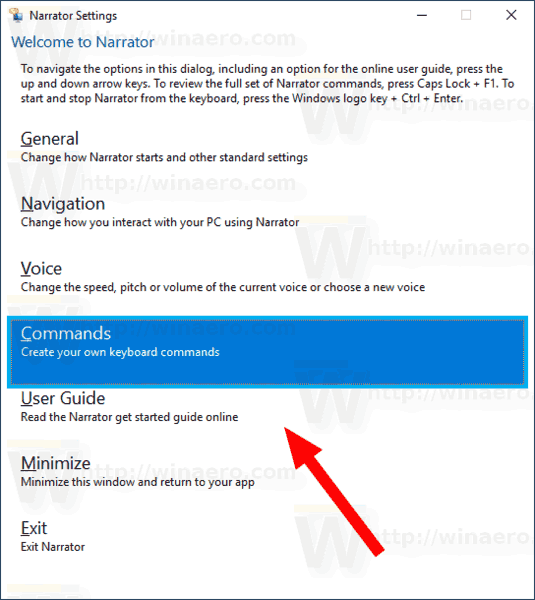
Starting in Windows 10 version 1903, there is a new option to minimize 'Narrator Home' to the system tray and to remove it from the Alt + Tab dialog.
To Minimize Narrator Home to Taskbar or System Tray in Windows 10,
- Open the Settings app.
- Go to Ease of Access -> Narrator.
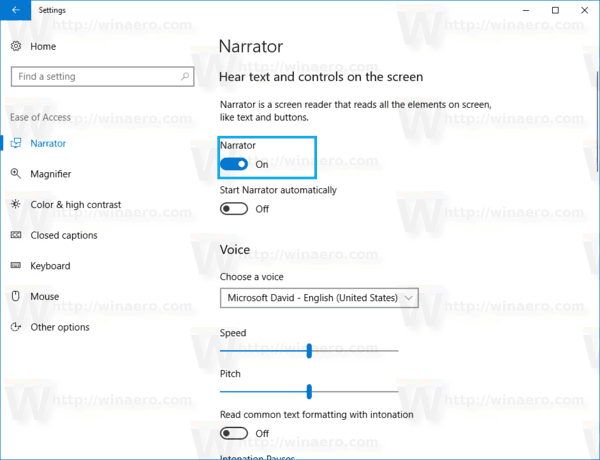
- Scroll down to the Start-up options section.
- Turn off the option Minimize Narrator Home to the system tray to make the Narrator Home window appear in the taskbar instead of the system tray.
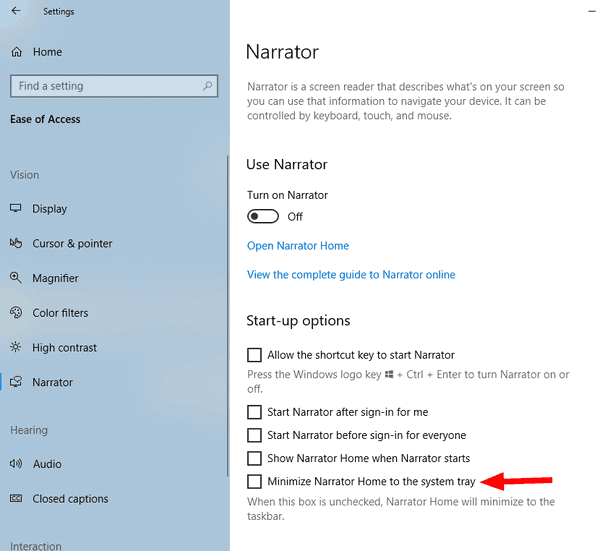
- Enable the option to move it back to the system tray. This is the default behavior.
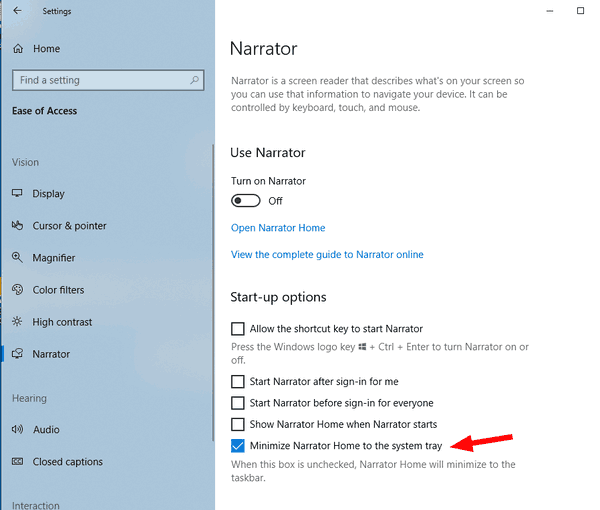
You are done.
Alternatively, you can configure this feature with a Registry tweak.
Registry Tweak
- Open the Registry Editor app.
- Go to the following Registry key.
HKEY_CURRENT_USER\SOFTWARE\Microsoft\Narrator\NarratorHome
See how to go to a Registry key with one click.
- On the right, modify or create a new 32-Bit DWORD value MinimizeType.
Note: Even if you are running 64-bit Windows you must still create a 32-bit DWORD value. - Set MinimizeType to 1 to minimize Narrator Home to the taskbar. Set it to 0 to minimize it to the system tray. The default value is 1 (minimize to the taskbar).
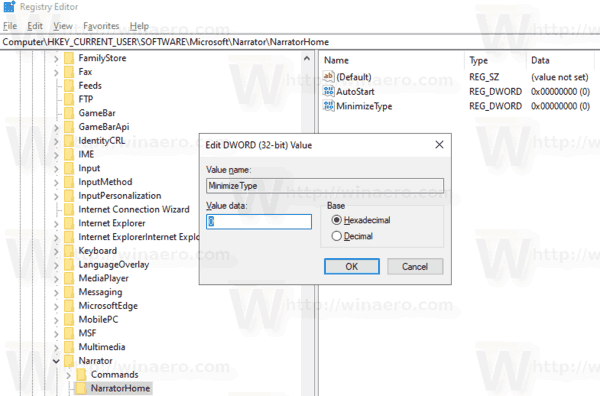
- To make the changes done by the Registry tweak take effect, you need to sign out and sign in to your user account.
You are done.
To save your time, you can download the following ready-to-use Registry files:
That's it.
Related articles:
- Customize Narrator Cursor Settings in Windows 10
- Customize Narrator Voice in Windows 10
- Change Narrator Keyboard Layout in Windows 10
- Start Narrator Before Sign-in in Windows 10
- Start Narrator after Sign-in in Windows 10
- All Ways to Enable Narrator in Windows 10
- Disable Narrator Keyboard Shortcut in Windows 10
- Hear Advanced Information About Controls with Narrator in Windows 10
- Change Narrator Keyboard Shortcuts in Windows 10
- Turn On or Off Narrator Caps Lock Warnings in Windows 10
- Read by Sentence in Narrator in Windows 10
- Disable Narrator QuickStart Guide in Windows 10
- Unlock Extra Text to Speech Voices in Windows 10
- How to Change Narrator Audio Channel in Windows 10
Support us
Winaero greatly relies on your support. You can help the site keep bringing you interesting and useful content and software by using these options:
